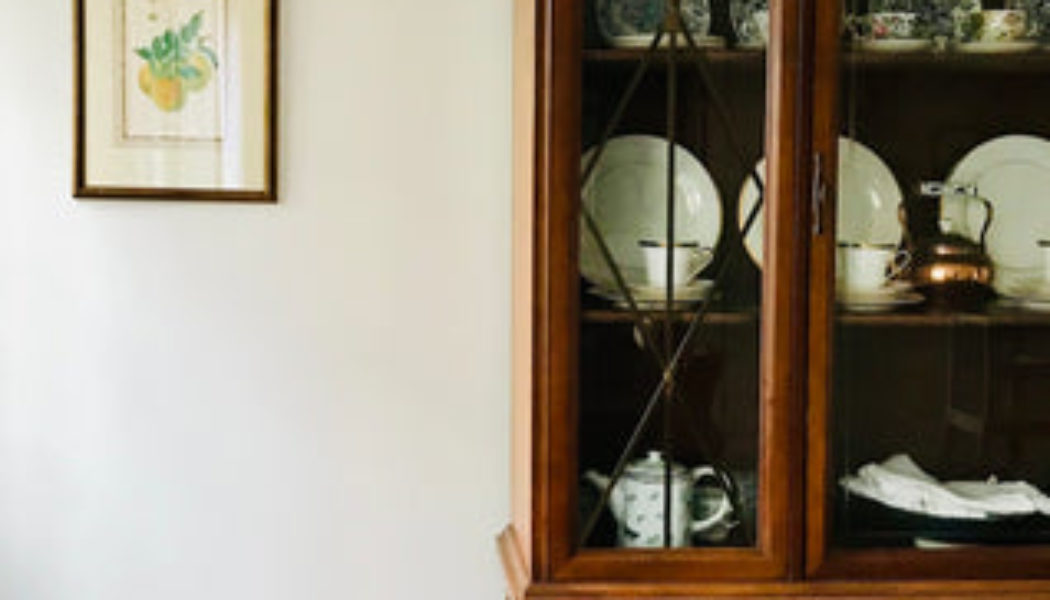By Mary Catherine Adams
When my first child was born, I remember sitting on the couch in our one-bedroom apartment, holding her as she slept, realizing that all of life had grown a thousand times more complicated. I was relieved to hold her in my arms but also so tired and so fearful that anything should happen to her. I knew that I loved her intensely but also that I did not yet know who she was.
Many of us have experienced something of this: amid its many joys, parenting brings a host of complexities, some wonderfully mysterious and others overwhelming. And it just gets more complicated as children grow up: the relational dynamics, the forays into defiance and discipline, the goal to love them unconditionally and also train and challenge them to be their best selves.
Decorating a house with and for small children presents similarly frustrating dualities. The home must be beautiful—for us and for them. But it must also be durable. It needs to be safe and secure but also offer opportunities for these small humans to prove themselves—ordered but not rigid, wondrous but not off-limits.
Into this complex situation enters a decorating hero: the antique—in its worn down, faded, exquisitely-made glory.

This might seem an odd child-friendly decorating suggestion. We tend to think newer, cheaper materials like plastic or vinyl or MDF will make life less hazardous. Or we resolve that we can only have beautiful furniture when the children are grown up. Antiques, I propose, present a better way. They wear well. They are works of art and therefore more durable. And they teach us.
Not until owning a home and trying to craft a timeless space have I understood the significance of old, used furniture, although my gut has always warned against the shiny, new products from conventional stores. They don’t seem trustworthy. Rather, as our children grow and we slowly furnish and decorate our house, antiques continue to impress me with the beauty and strength they bring. They have been here a long time—much longer than I have—and endured more.
Likewise, their aged beauty comforts those parenting temptations toward unpreparedness and doubt. They bear a kind of wisdom, and conveniently, with that bit of rough charisma we cleverly call “patina,” they almost call for more scratches and dings. What’s more, because much antique furniture is made of solid wood, touch-ups are fairly easy. Invest in a fold of sandpaper and a can of restorative finish (my favorite is this one), and if a scratch or divot is too distracting, give that area a quick sand and refinish. Antique pieces improve with age.

Made by artists and craftsmen of real materials, old furniture is bound to last, unlike in our contemporary age, which offers an abundance of goods poorly-made.* They are better made than much of what is manufactured today and stand up to the use and play of children, who are not malicious but often unaware.
Antique pieces are works of art, distinct from mass manufactured goods. They have a purpose for which they were crafted that conveniently intersects with ours—life. And so, in a unique way, antiques invite us to live with them—in contrast with furniture that is meant to be beaten up and replaced shortly. Antiques, rather, rest with us in our imperfections and remain steadfast.
Children learn from them as well, so let’s allow them the lessons. We can show them the dovetail carpentry on the old dresser or the veining in the burl of the wood. What natural beauty! What artistry! These pieces around our homes are sources of knowledge and wonder. In this way, they integrate beauty and usefulness and provide a model of how we should hope to be ourselves—both lovely and generous. They might even inspire future artists and craftsmen.

For those of us who worry about the home looking too museum-like or too encapsulated in one era, try mixing different styles of antiques. Eastlake Victorian is not for everyone, and it needn’t be. Aim for a few pieces with curve and flourish (larger or smaller depending on your taste) and a few simpler or more angular pieces. Midcentury pieces (my favorites are credenzas and cesca chairs) provide graceful but still sleek silhouettes. However, keep in mind that some midcentury pieces are not solid wood but veneer, making them more challenging to repair when chipped and scratched. They will handle wear and tear differently.* Overall, look for pieces of furniture that seem to call to you, the ones you love.
When it comes to shopping and crafting rooms, aim to buy antique for some of the largest or most-used pieces of furniture—the workhorses of your home. Think dining room tables, coffee tables, china cabinets, armoires and dressers, bed frames, and bookshelves. Even if this list seems long, there are ample opportunities to modernize with art, lighting, textiles, accent furniture, and smaller décor.
If you haven’t already, I hope you’ll give antiques a try in your home, no matter the age of your children. Thrift stores and garage sales are the place to start. And don’t worry about the kids’ hurting them because these works of art were made for living.
St. Therese of Lisieux wrote of “Peace, confidence, and love”—the graces God desires to give us. In a surprising, ordinary way, in the midst of the complexities and mysteries and anxiety, antiques teach us those things as well.
* I do not mean to criticize the people who make our things but the impoverished system of work that consumerism has created. Laborers today suffer most. Conversely and encouragingly, there are a refreshing number of companies crafting beautiful pieces in our country today, and we should do our best to support them when not buying used or vintage.
* An interesting read about wood veneer.
Mary Catherine writes and works in interior decorating in rural southern Michigan, where she lives with her husband and children. You can see more of her work HERE.
Join Our Telegram Group : Salvation & Prosperity








